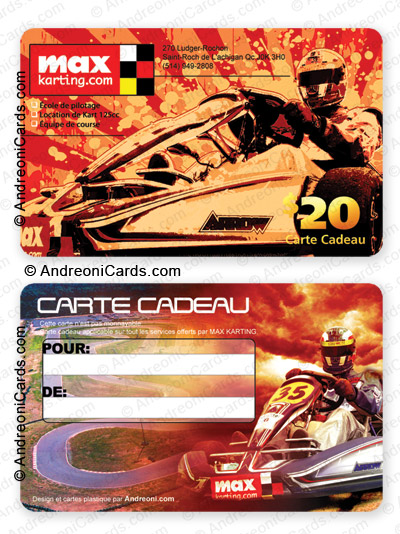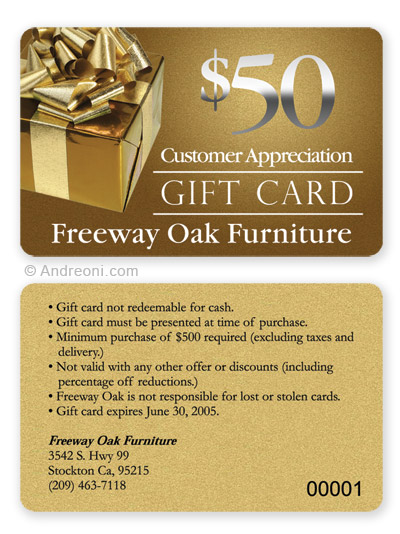|
Plastic gift cards, those easy-to-reach,
easy-to-purchase, colorful items conspicuously available at the checkout
counters in retail and grocery stores, are growing quickly in their use and
popularity.
Many gift purchasers seeking an appropriate present for holidays, birthdays
or this season of high school and college graduations see plastic gift cards
as a quick and easy solution to their gift-giving dilemma. Gift cards let
recipients determine exactly what to buy for themselves. They will get
precisely what they want or need.
The plastic gift card industry is becoming a large part of the retail scene.
In 2002, gift cards accounted for $45 billion in sales. The cards sold
during the 2005 holiday season totaled $18 billion.
Retailers find plastic gift cards easier and less expensive to handle than
paper, and more difficult to counterfeit. Shoppers find them convenient.
Some cards can be "reloaded" with value, just fork over more cash at the
register. Plastic gift cards also have a higher perceived value than
a simple paper based gift certificate.
 |
It is interesting to note that 10 percent of the money on plastic gift cards
is never redeemed. This places almost $5 billion of clear profit in the
hands of the retailers. In addition, monthly "maintenance fees," "inactivity
fees," "service fees" or "administrative fees" can be tacked onto these
cards at issuance or may kick in several months later. Over time these
"termite fees" chew away at the value of the gift.
If not used for a year or two, the card may have no value at all. Some cards
have an expiration date. This becomes not the gift that keeps on giving, but
the gift that keeps on shrinking.
Remember also that plastic gift cards often are treated just like cash. If
they are lost or stolen, they will not be replaced, or there will be a fee
for their replacement. Another important note: Many retailers are now
returning plastic gift cards - not the traditional cashable checks - to
consumer participants in their product rebate programs.
 |
So, what's the bottom line on plastic
gift cards?
In the final analysis, plastic gift cards can be a
practical gift in this fast-paced and hectic world, and in more than one
way, a very profitable tool for merchants.
Just like any other gift, gift cards must
impress!
Andreoni.com offers superior design and printing of
plastic gift cards, making sure your cards will look of very high value and
further facilitate their sale. Our pricing includes all the features
needed to make your cards stand above the others. Full color printing on
both sides, glitter effect, foil, clear and clear frosted stock and so on.
Available Features
From full color printing
to magnetic stripes, see what we include in
our pricing.
Related searches:
Plastic gift cards, plastic gift card design, plastic gift card printing,
plastic gift card printer, custom plastic gift card design, gift cards,
gift card sleeves, gift card programs, plastic cards.
 |